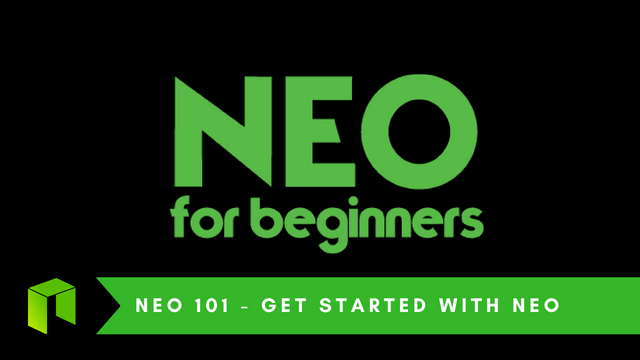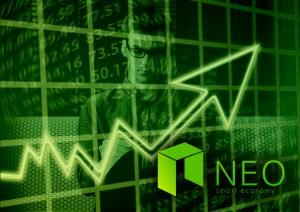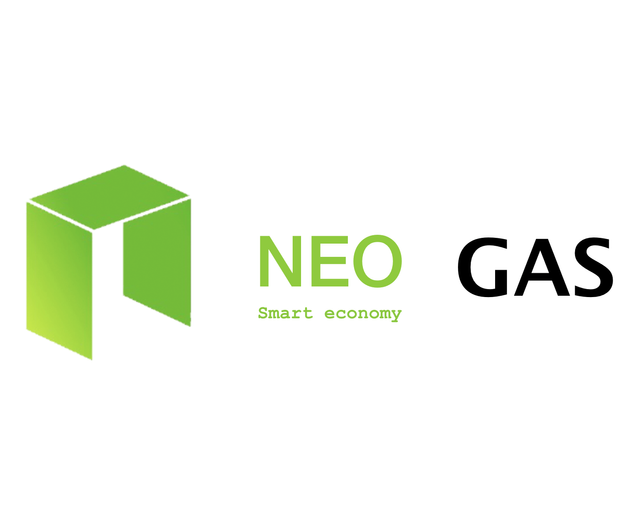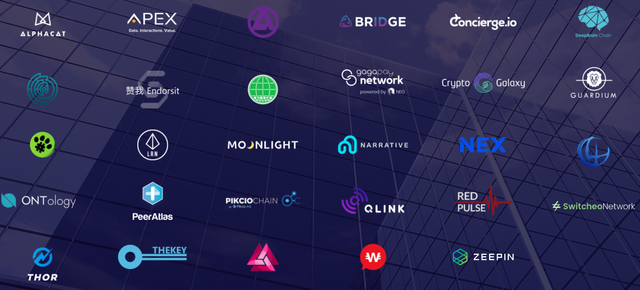Neo 101 Get Started – Get Started with NEO – NEO Smart Economy Guide

Introduction:
We realize that every day new people get acquainted with the ‘NEO smart economy’ for the first time. It can be an overwhelming experience as there is an enormous amount of information out there about NEO and the NEO smart economy. In this NEO 101 guide, we aim to give you an easy to understand ‘NEO Get Started’ Tutorial.
We hope this will help any ‘NEO beginner’ to get started with the basics. We intend to update this guide as the ecosystem evolves, so go ahead and bookmark this page so you can stay up to date here at Neonbeginner.com
We will address the following topics
What is NEO
What is the ‘Smart Economy’
NEO and GAS token
NEP-5 tokens
How to securely store your tokens
What is NEO?

NEO is a next-generation open-source blockchain which aims to be the go-to platform for a vibrant DAPP ecosystem, thus creating the ‘NEO Smart Economy’.
Let’s quickly break this down for you. You can think of NEO as your Blockchain-based ‘Chrome Store or IOS app store’. The ‘applications’ that run on the NEO blockchain are referred to as ‘Decentralized Applications’ or DAPPS.
Now don’t take the comparison with the ‘Chrome Store’ too literal as the NEO blockchain and the DAPPs running on top of it, can be much more than ordinary ‘apps’. These decentralized applications can form entirely new ecosystems on their own and have their own DAPPS running within their own ecosystem. One great example would be the ‘nOS’ project. nOS is a decentralized application running on the NEO Blockchain, but it is creating an entirely ‘new kind of internet’ which will host its own nOS ‘DAPP’-store.
The ‘Smart Economy’?

Have you ever asked yourself the question why they call this a ‘Smart Economy’? Are you unsure about how Blockchain applications are changing the world? Let’s try to explain. A ‘Blockchain’ is essentially a distributed and cryptographically secured database. Now while this is a great improvement in itself as it truly allows for your sensitive data to be secure (not hackable). The most important part of Blockchain is that this database can also store and execute smart contracts. Now why is that so important, you ask? Today, contracts are still mainly written on paper, but more importantly, when a party is not complying with a contract, it can be a very long and costly process if you want to be compensated for the ‘harm’ that was done to you. Now, today’s mixture of paper trail, lawyers, judges, and overall bureaucracy, causes enormous damage to productivity in society. This ‘inefficiency can be found in all layers of society
Smart contracts allow for many of these ‘intermediary’ processes to be eliminated. A smart contract can be executed based on a set of programmable, but immutable rules. So imagine you
The NEO and GAS token

NEO is the governance token of the NEO Blockchain. It allows you to have a stake in the Blockchain and a governing vote in this decentralized network. NEO tokens are capped at 100 million and units are indivisible.
GAS, on the other hand, is divisible and is used to fuel the transactions in the NEO Network. Transactions are essentially executions of a smart contract. You can earn GAS tokens simply holding NEO in your wallet.
NEP-5 tokens

As we have explained before, NEO is the core blockchain network on top of which an entire universe of new decentralized applications is being built. Now, each of these DAPPS can choose to create their own token based ecosystem. These tokens are referred to as NEP-5 tokens. Projects will often use these tokens as a funding mechanism for their project and offer them for sale in an ICO (Initial Coin Offering).
While decentralized applications can technically run on NEO the NEO network by utilizing the NEO and GAS tokens, it makes more sense to create application-specific tokens which can power an entirely new ecosystem. People will often speak about tokenomics. These tokens are used within the economic model as a method to incentivize adoption and cooperation.
Some examples of NEP-5 tokens are:
Bridge Protocol – IAM token
THEKEY project – TKY token
Phantasma Protocol – SOUL token
You can browse and learn more about your favorite tokens using our ‘Token slider’ or check the list of all tokens here.
How to securely store your tokens
Security of buying and holding tokens
First and foremost, let us deal with the security of buying and holding tokens. In the world you have known until now, ‘Banks’ have been the ‘centralised party’’ holding ‘your assets’ and your ‘identity’ for you. With crypto assets, there is no central party you can go to if something goes wrong and your assets are not linked to your name, they are linked to your wallet. The closest thing you’ll have to a central protective party would be the centralized crypto exchanges, like Coinbase, Binance, Gemini, and others, which will offer some recovery services based on your identity.
The problem, however, is that they hold your private keys and that they are oftentimes hacked. So, while in many cases you might need to rely on ‘central exchanges’ to make your token purchases, you should eventually choose to store your tokens on your own personal wallet and save the private keys yourself. Now, if you are new to cryptocurrencies, this might be confusing at first, but we’ll try to dumb it down for you, so stay with us.
What is a wallet?
Wallets are the places where you can store your digital assets. They are sometimes referred to as the equivalent of your bank. However, I like to compare wallets to a vault. Similarly to vaults, digital asset wallets cannot be opened if you do not hold the private key, period. If you would lose the ‘key’, access code to your vault, it is quite clear that you could never again access its contents.
Now, while you could argue that with enough energy and perseverance you might be able to open your physical vault, the same cannot be said about your digital vault or ‘wallet’. The whole point behind the value of digital assets is that they are 100% hack proof. In other words, you should not ever lose your ‘private keys’ to your personal wallet! Remember that this also means that no one should ever have the pleasure to ‘see’ your private keys in any way shape or form.
Private Keys, Public Keys, and Encrypted Keys, what does it all mean?
So, we already have established that your wallet is some kind of a ‘digital vault’ and that the ‘private keys’ are the unhackable security key which is needed to access the vault. Now it’s important for you to understand that a ‘Wallet’ consists of a private key, a public key and an encrypted key.
An example of a ‘Wallet’
The Public Key is represented as a series of numbers and letters. This is like ‘your bank account number’ which you can share freely at your discretion. Anyone, anywhere in the world can send tokens to that account. There is no need for a ‘central party’ to authorize the transaction! The blockchain acts as a verifier and once the blockchain has processed the transaction, it is final. This means that when tokens are sent to your account (public key), the transaction can’t be reversed. You have the guarantee that the tokens are in your possession. On the other hand, you’ll have to take into account that this works both ways. You should never send digital assets to a party that you do not trust or make a mistake with the amount you want to send. Another thing you should know when it comes to ‘Public Keys’ is that they are public! A simple search onto the NEO blockchain will reveal to anyone with knowledge of your ‘Public address’ which tokens are stored in the Wallet. This can be done using any Neo Blockchain explorer, like Neotracker.io.
With this in mind, people tend to have different public addresses they will share and others that they will keep private. There is no limit to the amount of ‘Wallets’ you can create for free.
The Private Key is the key to your wallet, digital vault, you can never share it with anyone. You will need it when you want to transact your digital assets, as it is the unequivocal proof that you own the wallet and its contents. The problem here is that in order to transact our cryptocurrencies, we are sometimes forced to expose our private keys.
Even when you create a wallet you should be mindful that your computer might be ‘spied’ upon. While this might scare you off, don’t let it stop you. We will show you how to proceed in absolute safety and teach you how to protect your assets by creating wallets the ‘right way’.
The ‘Encrypted Key’ is basically an encrypted private key. As we mentioned before, you have to be careful not to use your private key when you are connected with the internet as prying eyes could rob you of digital your wealth. In order to allow you to have an additional layer of security, you can add a private ‘passphrase’ to your private key. This means that anyone in possession of your encrypted key would also have to know the ‘passphrase’ in order to steal your funds.
Now, even encrypted keys and ‘passphrases’ can be spied upon, so we’ll still need to learn to properly create wallets and learn about the different types of wallets in existence their respective security levels. Don’t worry, you can secure your assets!
Understanding the different types of ‘Wallets’
First of all, you should know that there are 5 types of wallets. While we will not go into the setup of each type of wallet here, it is paramount for you to know that there are some essential differences between them.
If you are only just getting started, you might be worried about finding a ‘legitimate’ wallet for your tokens. Neo has made it easy for you to make your choice as it has a list of NEO-approved wallet options that you can find here.
5 wallet types
Paper wallets (safe and
Desktop Wallets
Mobile Wallets
Web Wallets
Hardware Wallets
Paper wallets: While Neo does not mention the paper wallet specifically in its list of wallets, they are still an important part of the ecosystem. Whether you are getting acquainted with NEO or other cryptocurrencies like Bitcoin, Ethereum, and so on paper wallets allow you to understand the ‘core’ of how wallets function. Paper wallets are a very secure way to create a wallet and keep your keys private and safe. A paper wallet generator basically allows you to create a wallet while you are disconnected from the internet. This allows you to generate your keys and print your ‘wallet’ safely. Now, unless you just want to store your tokens, the paper wallet in itself will be limited.
Desktop Wallets are also a good way to transact your NEO, GAS and NEP-5 tokens. With the NEON desktop wallet, you can also create a paper wallet and use it as a desktop wallet to transact or check the balances of your tokens. Note that with NEON you are in control of your ‘private keys’ they are not stored on your computer. Different desktop wallets might have different ways they deal with this so be mindful that not every desktop wallet will behave in the same way. Other Desktop wallets might
Mobile Wallets are an easy way to have your cryptocurrencies with you all the time. One thing that you should remember is that mobile security could be compromised. You should also take into account that your phone could break or get stolen, therefore it is important that you have the taken the corresponding ‘backup’ measures with respect to the ‘mobile wallet application’. It is advisable that you only store ‘pocket change’ on your mobile wallet.
Web wallets are also pretty handy, they are, as many web services prone to hacks. They essentially store your private keys for you so you don’t have to, but this is where you have to confide that they have taken the proper measures to hold the private keys of their customers secure.
Hardware wallets are without a doubt the most convenient and safe way to transact your tokens. Similarly to the paper wallet, your keys are held in what is called ‘cold storage’. You can think of this as, storage which is not connected onto the web. Like paper, or the hardware wallet in this case. A very popular hardware wallet is the Ledger Nano S. This pen drive like ‘piece of equipment’ allows you to login to your ‘Neon’ desktop wallet for example without having to enter your private key or even encrypted key. The ‘keys’ never leave your hardware wallet! This means nobody can see them and your assets remain safe!